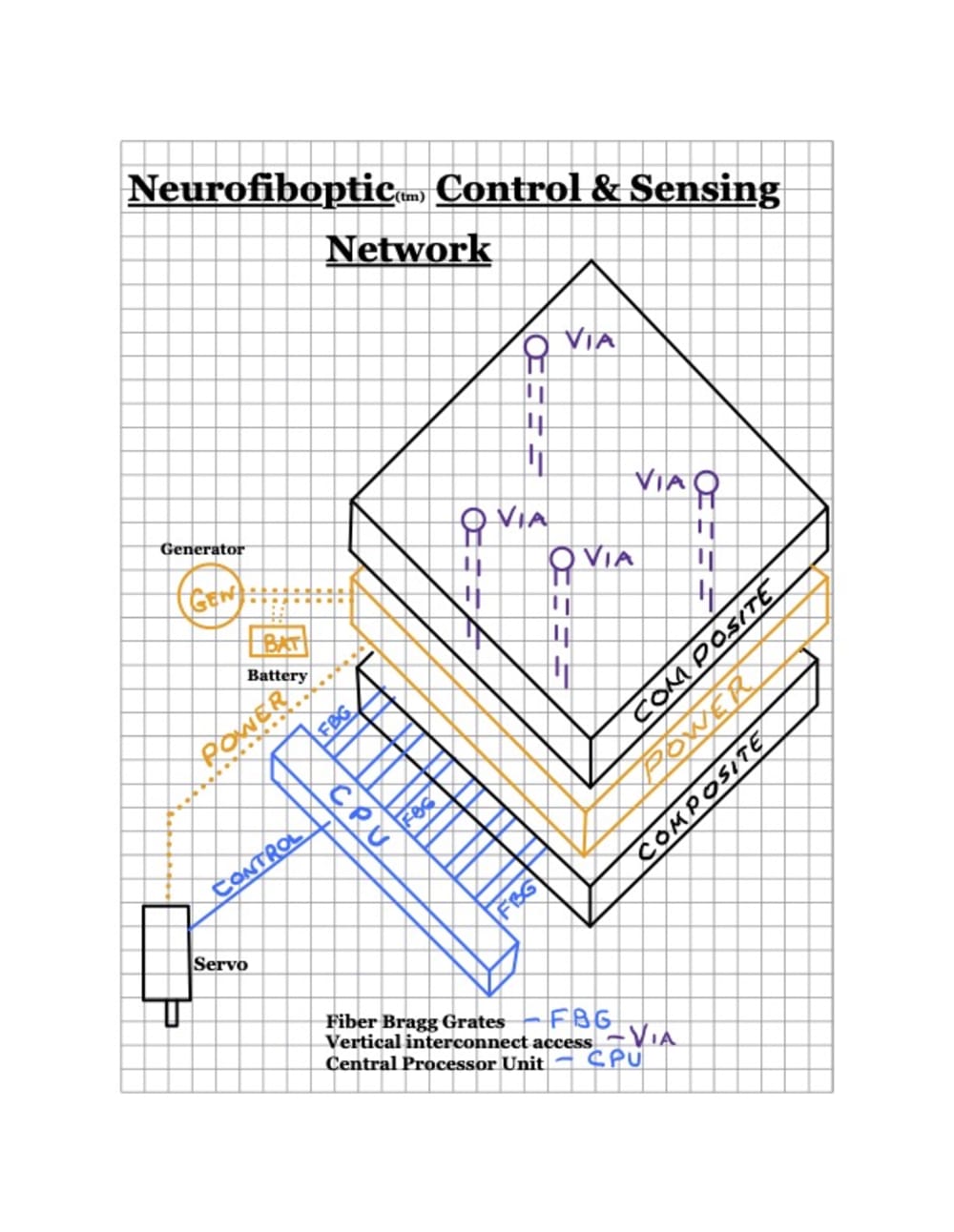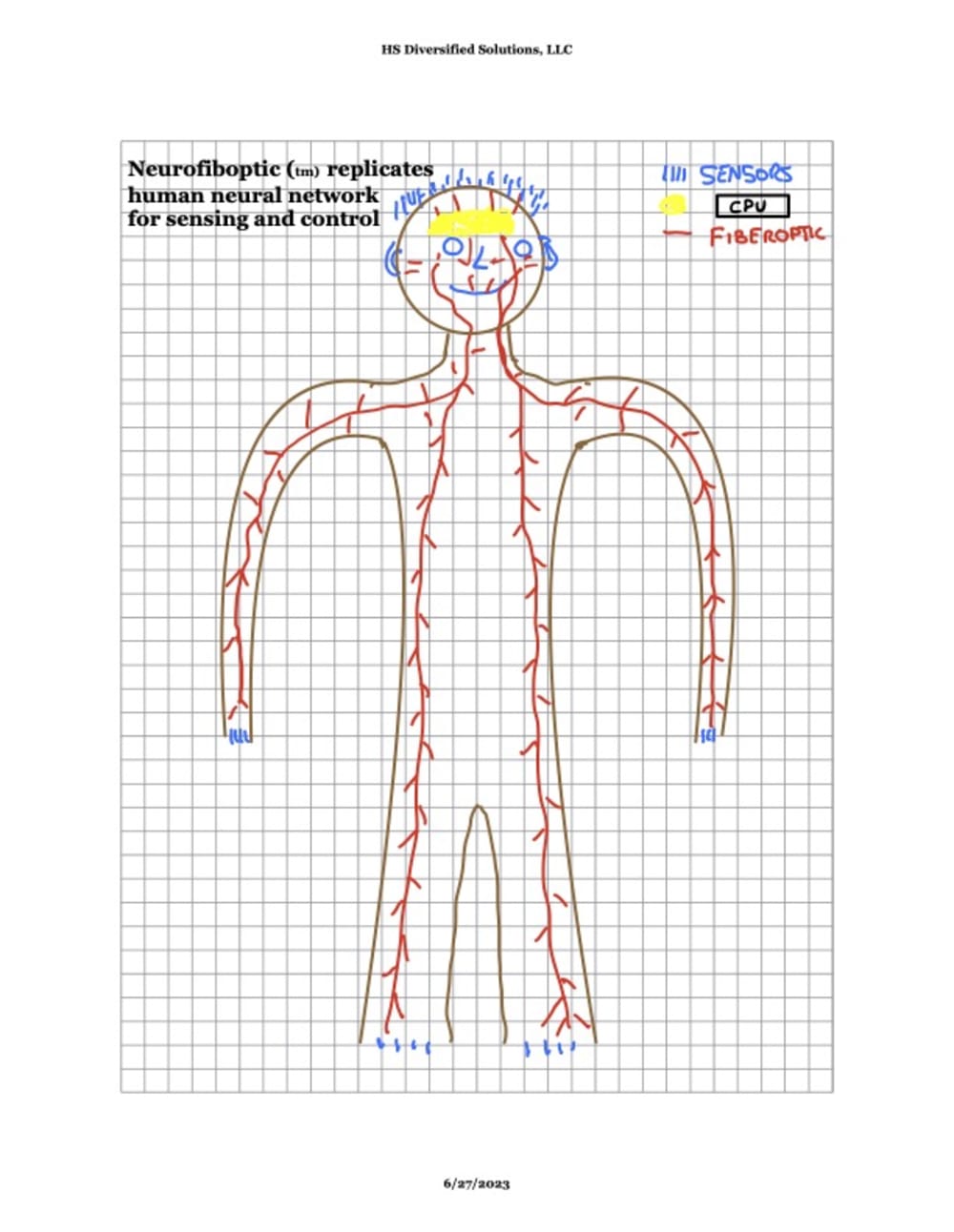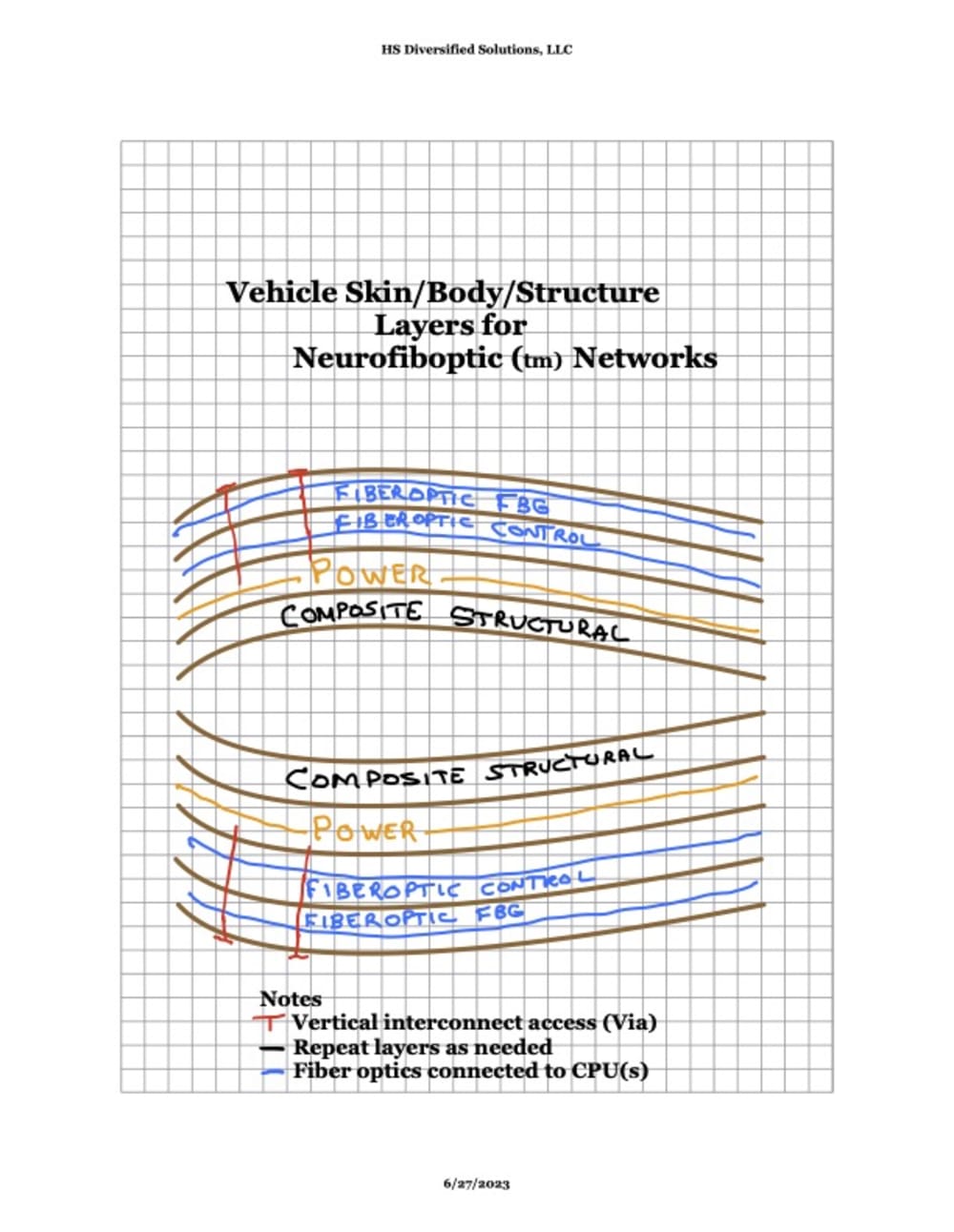This design idea solves the problems of heavy weight and costs in aircraft and vehicle systems design and manufacturing by eliminating thousands of feet of copper wire that power and connect various systems, most EMI, and time and costs with less additive steps of manufacturing. An additional benefit is safety redundancy built in and reduced maintenance.
A Neurofiboptic™ Control and Sensing network consists of embedded, between layers, or surface mounted fiber optics spread strategically throughout a composite structure and network proportional to the required and desired functions. The number of layers are tailored to the specific application and can be visualized as functioning like the human nerve and sensory network driving the body's feedback loops and muscular/body parts control and reactions. This is novel by designing vehicles as a total system like a human body and not separate systems for electrical, vehicle control, sensors, in addition to structural life or EMI protection and eliminates significant manufacturing steps and costs.
Network control is through Central Processor Units (CPU) sized to system or sensor input/output needed in a neuro control and sensing network of fiber optics. Power is sent to servos or any control mechanisms (like muscles) integral to the sensor and control network.
Power can be provided by copper layers similar to their function in a printed circuit board and utilizing Vertical interconnected access (Via's). Sensor feedback and functions come from Fiber Bragg Grating (FBG) technology where needed using reflectors within the fiber optics for specific wavelengths and periodic variations in the indexes of the fiber itself. Via's can connect discrete external sensors or provide control feedback pathways.
Functions can be simple on/off or complex interactions for an input/resultant output. Neurofiboptic™ is the trademark name for any control network based on fiber optics of any form connected by any translator signal or input/output function in a smart composite design.
All vehicles benefit from weight reduction, especially critical for aircraft and spacecraft, and particularly beneficial for new generation electrically powered eVTOLs. Reduced weight can provide improved payload and/or reduced energy consumption, regardless of propulsion source. EMI protection is a direct weight savings, plus a safety benefit. Electrical wiring harnesses are costly to manufacturer and install and drive weight and hours of installation. Due to the lightweight aspects of fiberoptics, multiple layers of redundancy can be designed in from the beginning which will reduce downstream maintenance and replacement and provide multiple layers of safety where needed.
Complex vehicle structures and designs benefit from a "smart composite" design approach, not just for structural integrity and life monitoring but for full systems and control of the vehicles for its full life. This design approach for reduced cost of manufacturing, production, and materials can be beneficial to commercial and defense applications and can be applied for individual subcomponents as well as the entire vehicle.
The market potential is as large as the transportation market in the future; the electric aircraft in the Urban Air Mobility sector alone is estimated in the billions in the next decade.
Like this entry?
-
About the Entrant
- Name:Stephan Hanvey
- Type of entry:individual
- Software used for this entry:No
- Patent status:pending








